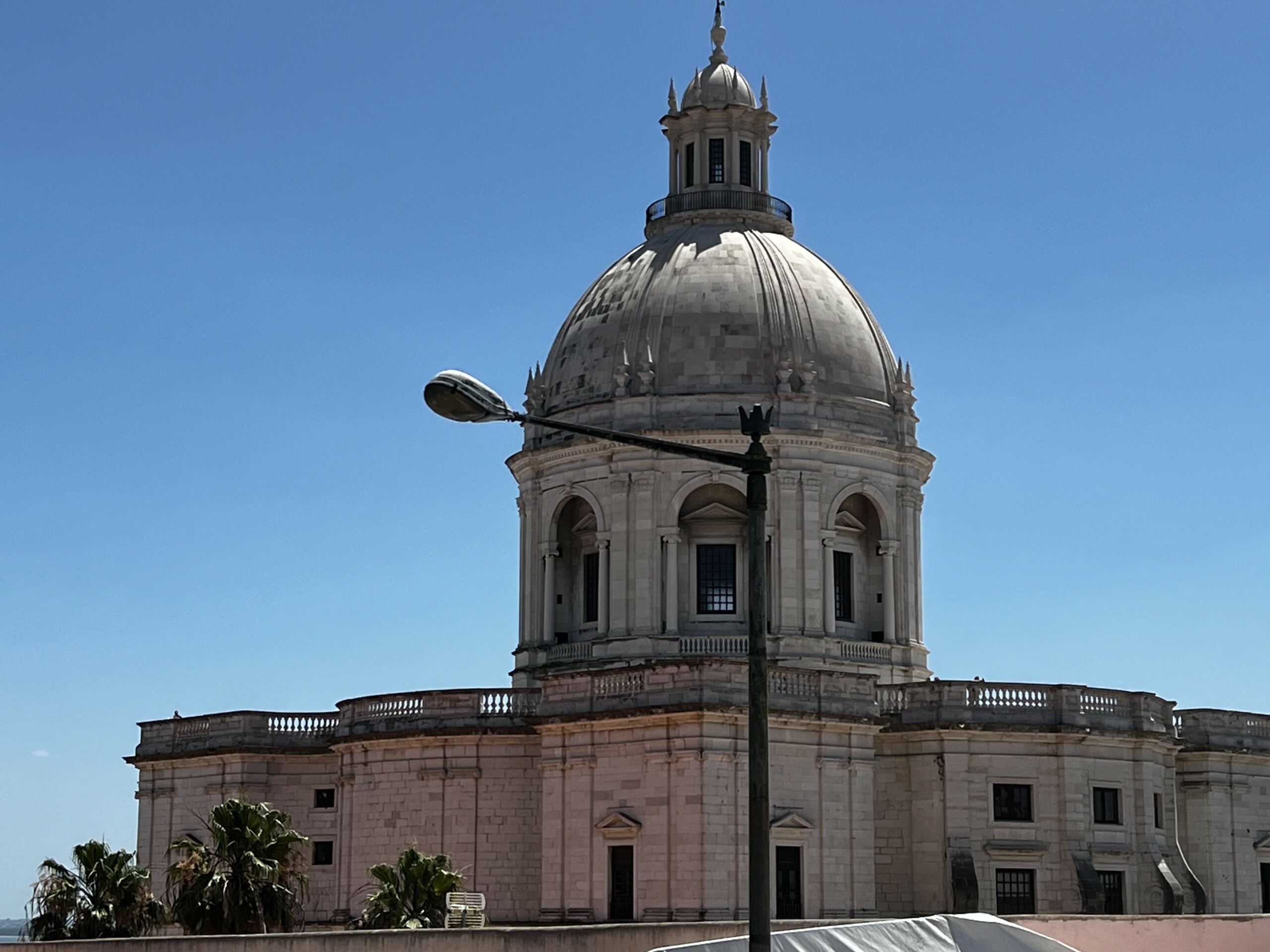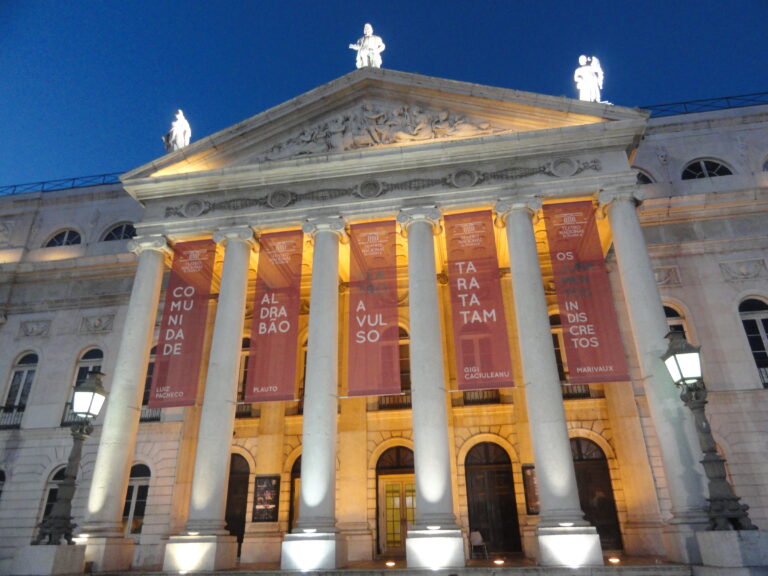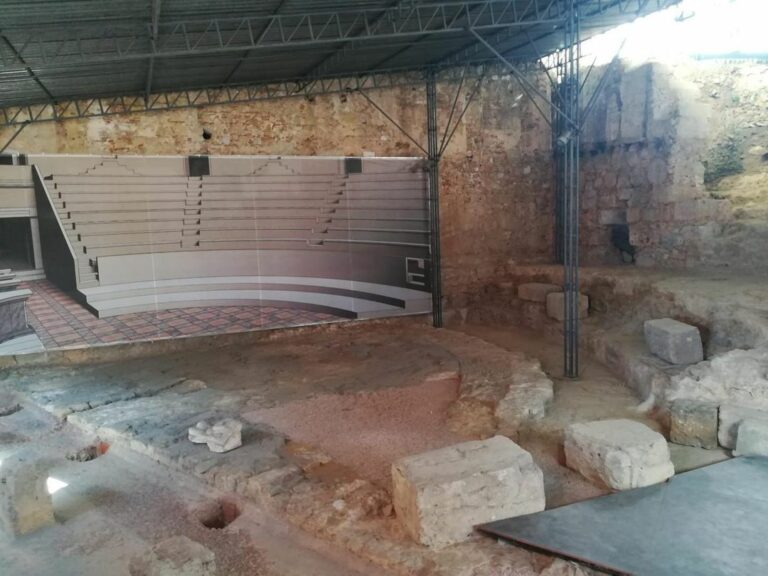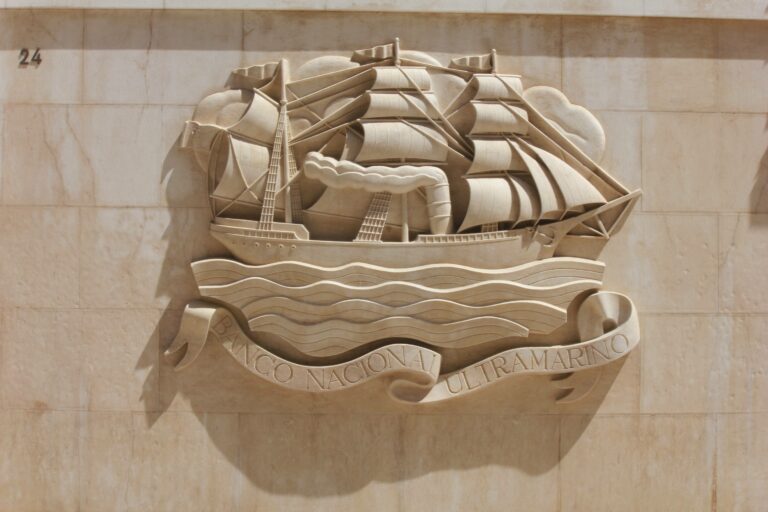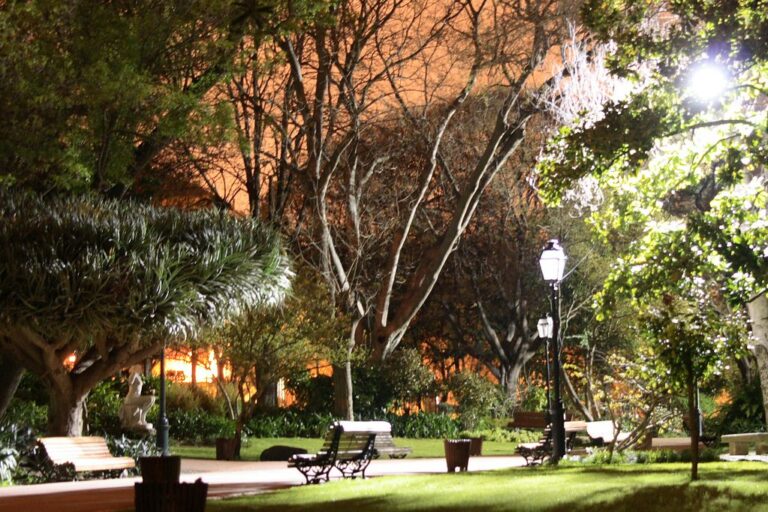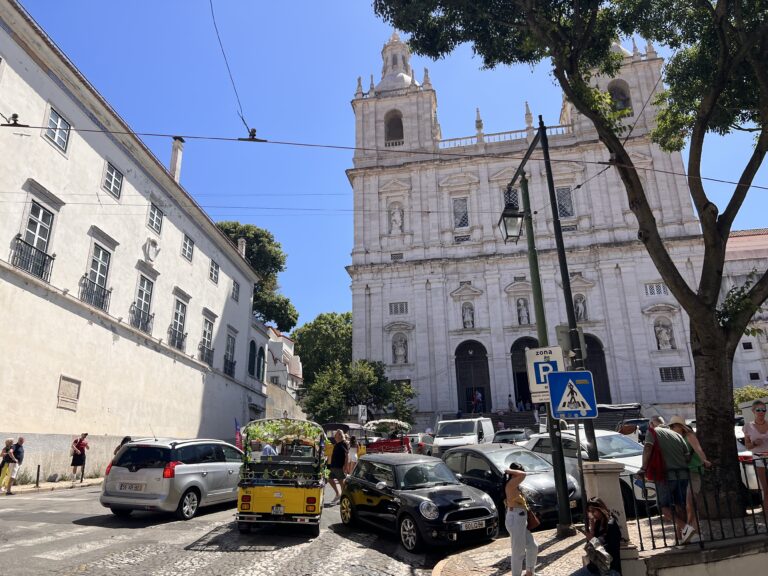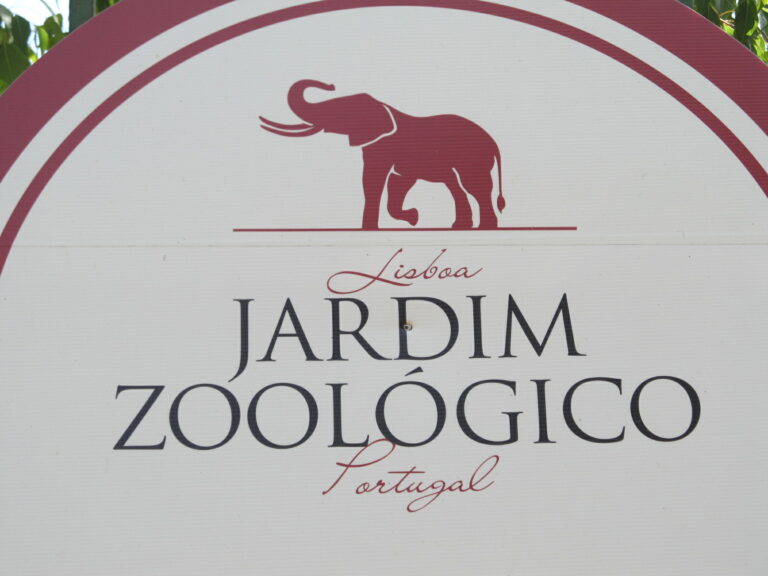When you emerge from Alfama’s magical small streets in Lisbon, you see the National Pantheon shoot up into the sky before you.
It looks magnificent outside, but your breath is taken away once you step inside.
So, if you are exploring the Alfama district, I recommend you visit the Church of Santa Engrácia. The best part is that I have a complete visitor guide right here.
Overview of The Nation Pantheon
The Lisbon Pantheon was the church of Santa Engracia, built in 1682. Its name was changed to Panteao Nacional Lisbon in 1916.
The large dome, completed in 1966, is one of the Portuguese monuments; thus, its construction took the longest.
The fascinating thing is that there is even a popular expression in the country for when something takes forever: “a job like St. Engratia.”
The National Pantheon is one of the first Portuguese baroque monuments. However, unlike most baroque architecture, it lacks the blue-and-white tile panels and golden ornaments.
Instead, the inside is lined with colored marble floors inspired by Saint Peter Basilica from Rome. The massive dome is built on an octagonal floor plan.
Here, you find the resting place of important historical figures, including Fado diva Amália Rodrigues. The prominent building is a symbol of Portuguese identity.
Planning Your Trip to The National Pantheon
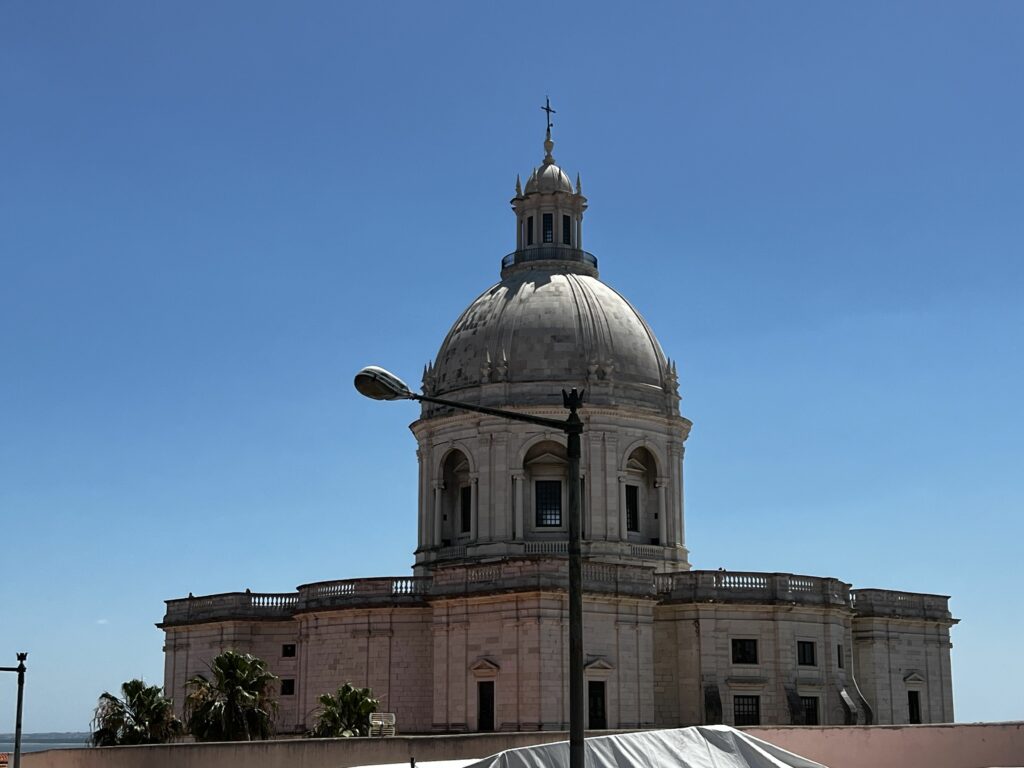
Before visiting Santa Engracia Panteao Nacional, it helps to know a few things.
National Pantheon Opening Hours
The Lisbon Pantheon is open from:
- October/March from Tuesday to Sunday from 10:00 AM to 5:00 PM
- April/September from Tuesday to Sunday from 10:00 AM to 6:00 PM
- As with all Lisbon Monuments, the Panteao National is closed on Monday, January 1st, Easter Sunday, May 1st, June 13th, and December 25th.
Lisbon Pantheon Entry Tickets
An admission ticket costs €8.00 but is free on Sunday mornings and national holidays.
If you have a youth card, are over 65, or are a family of four or more, you get a 50% discount. Children under 12 get entry free, and the same applies to disabled people and the unemployed from the European Union.
Hot Tip🔥: If you have the Lisbon card, you can enter the National Pantheon for free.
Practical Information
The emblematic monument’s central nave and burial rooms are accessible on the dome level for people with mobility concerns and wheelchair users.
The closest public parking space is at Campo de Santa Clara on Monday, Wednesday, Thursday, Friday, and Sunday.
Furthermore, there are no restrooms within the monument, but a Point of Sale is open during opening hours, offering author pieces, postcards, and more.
Planning On Going To Lisbon?
I’ve created a trip planner where you enter the number of days you’re going and what activities you want to do.
Based on your input, you then get an entire vacation planned with ideas.

How To Reach The National Pantheon in Lisbon
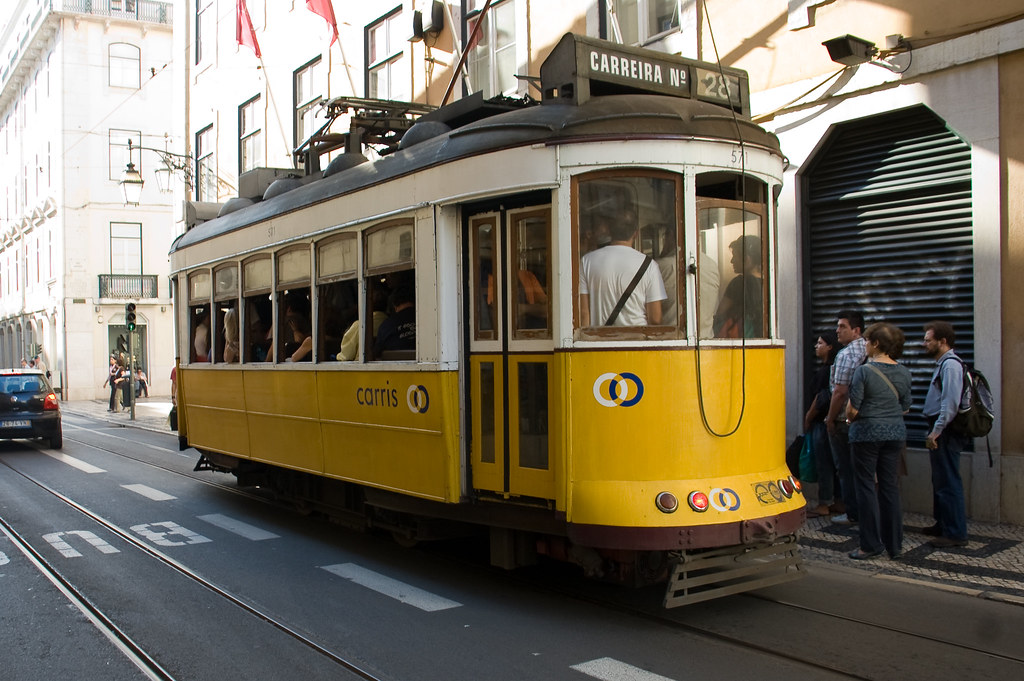
The elaborate structure is on Campo de Santa Clara, near the closest metro station, Santa Apolonia (on the blue metro line). It is 10 minutes’ walk uphill.
Alternatively, you can take Tram 28, which travels through Alfama and provides a much easier walk as you disembark at Saint Vicente Monastery.
Or you can take any of the following buses:
- 712
- 734
- 735
- 704
- 745
- 759
- 781
- 782 (to Santa Apolonia)
Exploring The National Pantheon
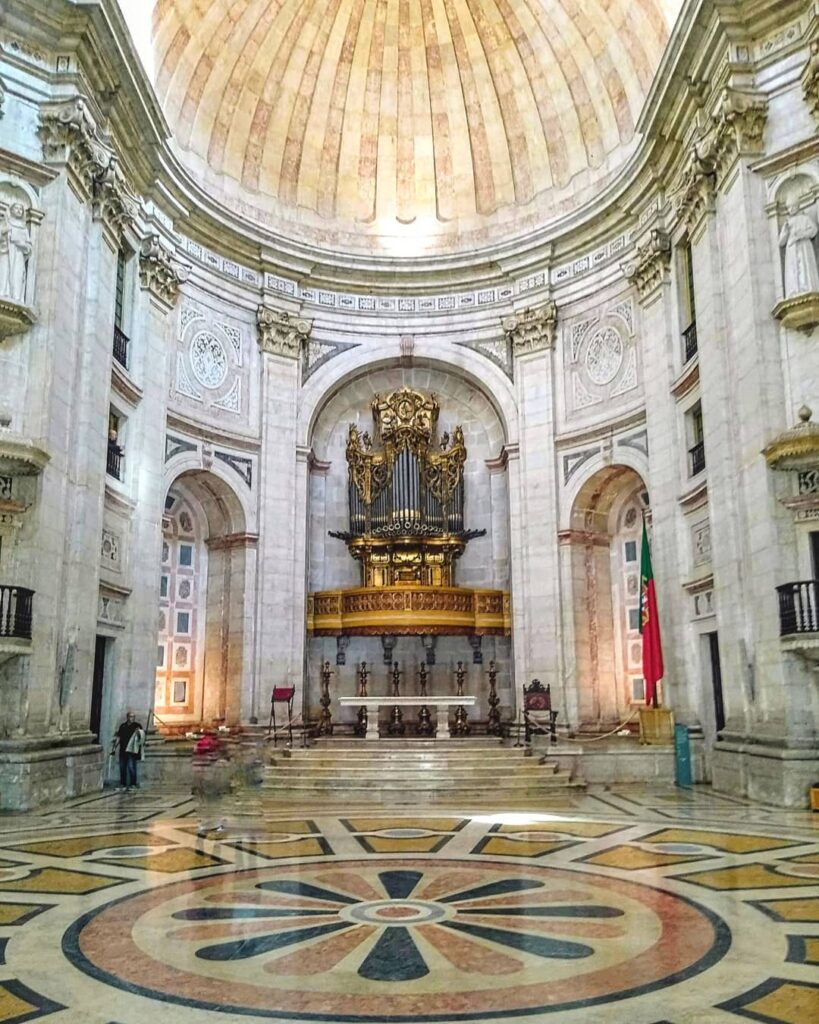
If you are on a self-guided tour, you can easily visit the Santa Engracia church at your own pace to explore the fantastic monumental dome.
When entering the monumental dome at the ticket desk, take the first exit on the left. From here, you can climb six flights to the top-level stairs.
Here, you will find a walkway around the internal perimeter with magnificent views of the symmetrical floor patterns.
When you observe the floor from the upper level, you see a unique Greek crossfloor plan rather than a Latin crossfloor plan.
The huge dome has four equal short wings that converge beneath it, while a common Latin design has three short wings and a single long wing.
Another striking feature is the repeated symmetrical patterns. No statues fill the side recesses, and the design appears minimalistic. The dome level is on an expansive terrace, providing spectacular views of Alfama streets.
Unfortunately, you cannot view the other Lisbon monuments except the Saint Vincente Monastery and the working docs. If the day is clear, you can see the Vasco da Gama bridge stretching across the Tejo estuary.
To the north, you will see the park and streets where the Feira da Ladra market occurs.
Here are the best things to do in Lisbon In September 2024
I’ll send you a list of the best things to do in September and every month moving forward from today.
It’ll be based on my personal experience of living and traveling around Lisbon for years. I’m sharing a lot of hidden gems. 🇵🇹
Main Attractions in The National Pantheon
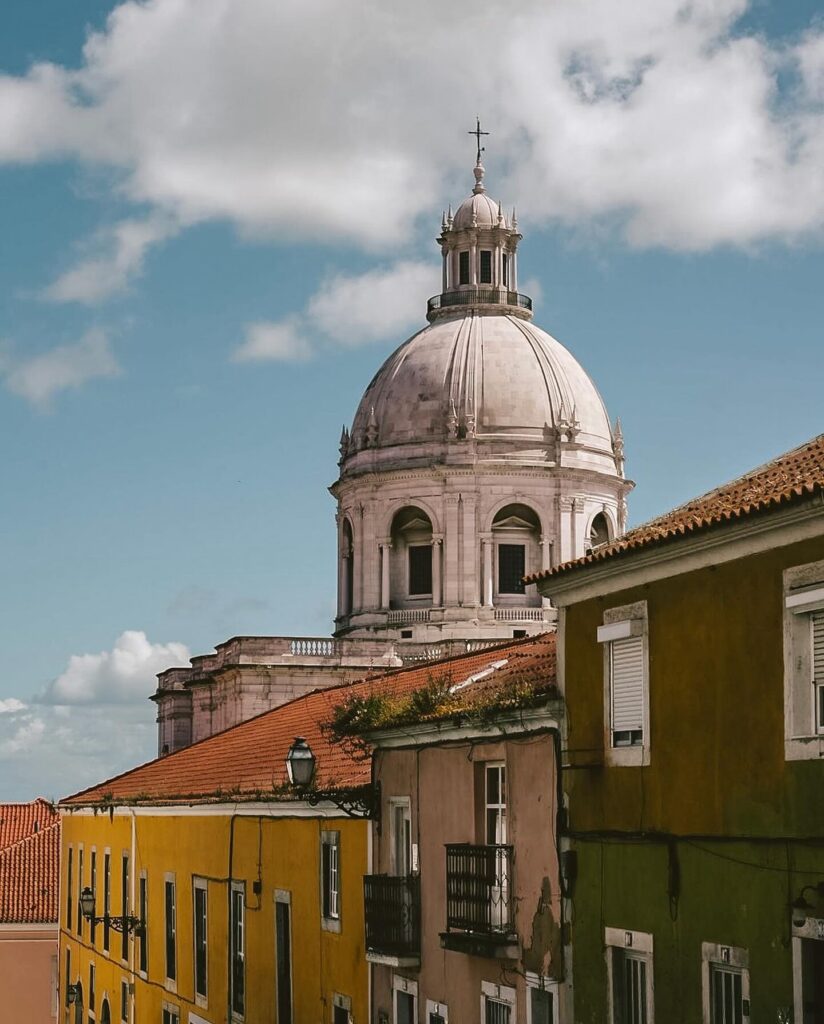
1. The Tomb Rooms
Inside, you find the tombs of several Presidents of the Republic and writers, including João de Deus. There are also artists like Amália Rodrigues and footballers Eusébio da Silva Ferreira and Marshal Humberto Delgado. The building comprises three burial rooms, which are found in the corners.
2. Central Ship
The building has undulating walls, and the Church of Santa Engrácia-National Pantheon is a remarkable monument. A notable thing is that when you look down at the Greek cross, the corners have curved elevations with turrets at the corners.
In the interior, you see marble topped with a majestic dome rising to 80 meters high and the cenotaphs of:
- Nuno Álvares Pereira
- Infante D. Henrique
- Pedro Álvares Cabral
- Afonso de Albuquerque
- Vasco da Gama
- Luís de Camões
3. The Choir-Alto
There is also an amphitheater space reserved for singing beneath the central nave. It has a semi-dome form and an 18th-century organ that occupies the main altar.
4. Interpretation Center
Here, you can find elements recovered from the original church, such as pieces of goldsmithing. A film documents the adventurous history of the Works of Santa Engrácia.
5. Exhibition Rooms
The building also has formerly reserved spaces comprising exhibition rooms open to the public when temporary exhibitions occur.
6. The Terrace
As the National Pantheon is on a hill facing the river, you can head to the terrace for magnificent views over Lisbon and the Tagus.
Places to Explore Near The National Pantheon

The National Pantheon is near the Feira da Ladra (Thieves Market) and the Igreja de São Vicente de Fora.
The Thieves Market occurs on Tuesdays and Saturdays in Campo de Santa Clare and the surrounding streets.
Hence, I recommend exploring Alfama and the region in the morning. It is an enjoyable flea market with great items on sale. Also, visit the Lisbon Cathedral, which has a rich history.
A typical visit to the Lisbon Pantheon takes around 30 minutes, and you can combine it with an Alfama self-guided tour (check it out here).
Tips For Visiting the National Pantheon
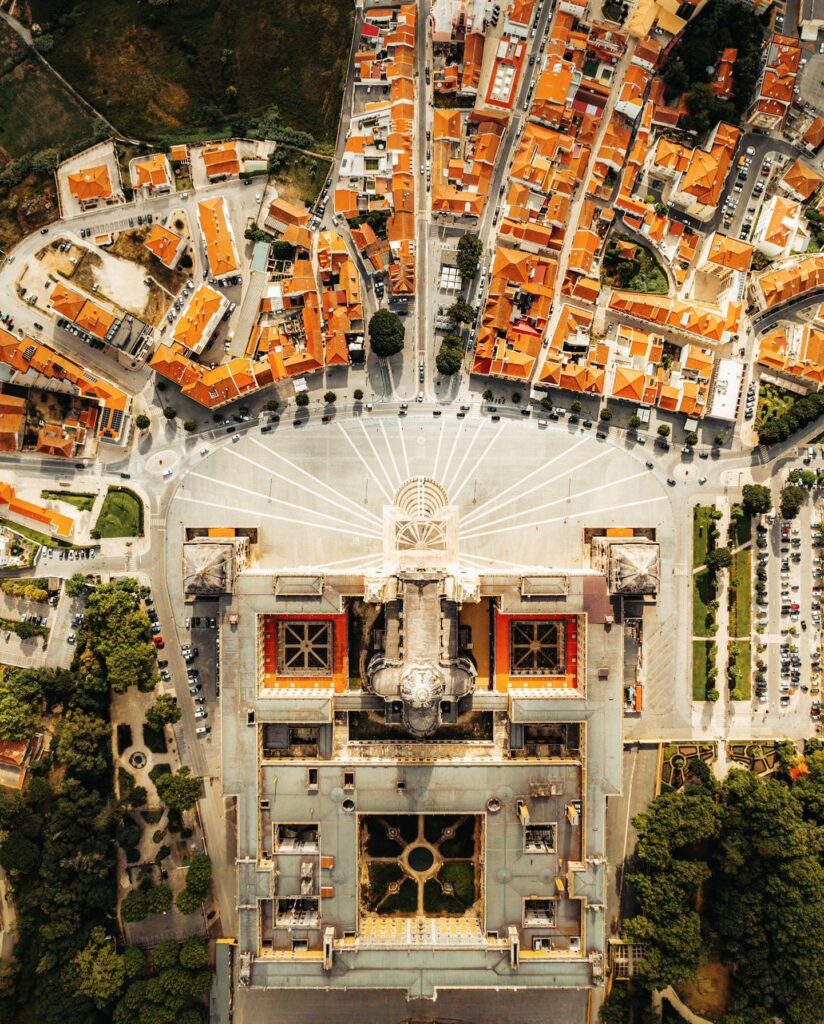
Recommendations for First-Time Visitors:
- Allocate sufficient time to explore the Pantheon thoroughly.
- Combine your visit with other attractions in the Alfama district for a full day out.
- Take advantage of guided tours or audio guides to enhance your experience.
How to Make the Most of Your Time:
- Plan your visit during off-peak hours to avoid crowds.
- Wear comfortable shoes, as there are stairs to climb to the dome.
- Bring a camera to capture the beauty of the Pantheon and Lisbon’s skyline.
Combining Your Visit with Other Attractions:
- Explore the nearby Feira da Ladra flea market for unique souvenirs and local crafts.
- Enjoy traditional Portuguese cuisine at one of the local restaurants.
- Ride on the iconic Tram 28 to experience Lisbon’s historic charm.
Where to Eat and Stay Nearby:
- Alfama offers a variety of restaurants serving delicious Portuguese dishes.
- Choose from charming guesthouses, boutique hotels, or larger accommodations to suit your preferences.
- Consider staying in the Alfama district to immerse yourself in the local atmosphere.
National Pantheon’s History
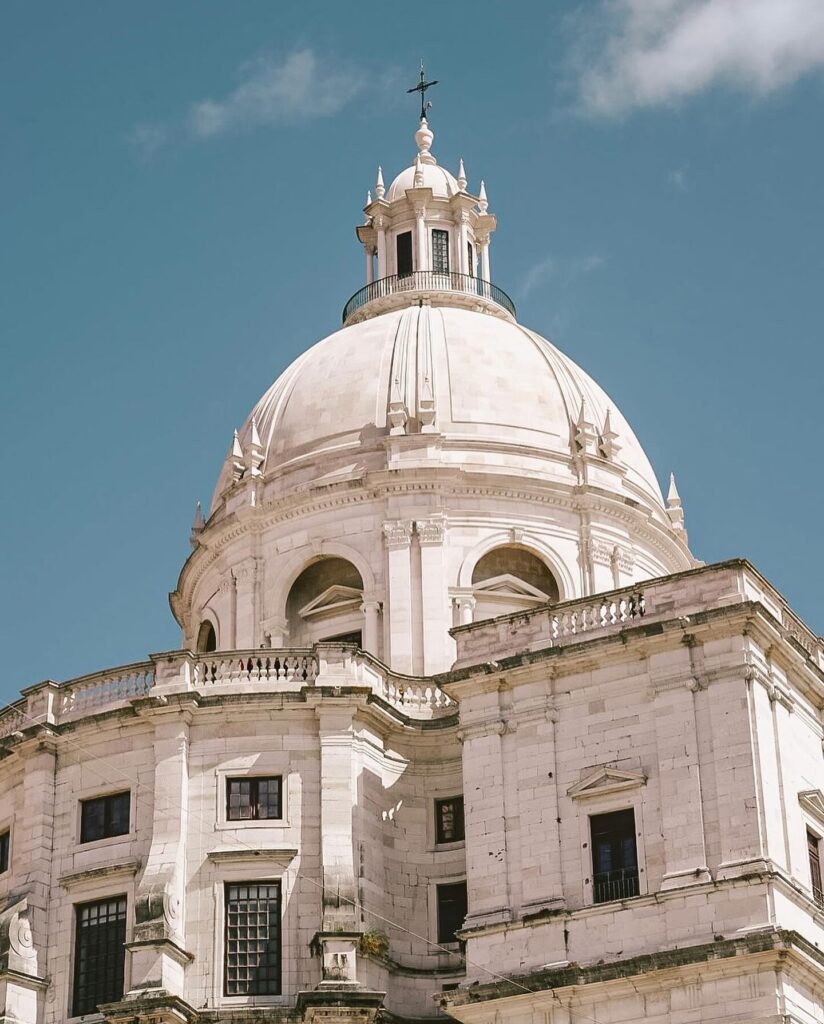
The original St. Engrácia church dates back to the beginning of the 17th century. It was built by the wishes of Princess Maria, the daughter of King Manuel l.
During the 17th century, architects overlooked the construction of Nicolau de Frias and Teodósio de Frias.
Yet nothing remains of the original construction. Then, architect Mateus do Couto conducted a reconstruction, but a storm ruined the result.
Then, the Brotherhood of the Holy Sacrament Salves constructed a newer church on the site, and the tender was awarded to João Antunes.
He designed the first baroque structure in Portugal, a large central-plan church forming a Greek cross with four turrets and a majestic dome.
Wrap-Up
I hope you found this visitor guide to the Lisbon Pantheon helpful and informative.
Visiting the National Pantheon in Lisbon promises a fascinating experience, from its majestic architecture to the historical significance of the resting place of important Portuguese figures.
Remember to plan your trip considering the opening hours and ticket information.
Exploring the monumental dome and the main tourist attractions will surely leave you with lasting memories of your visit.
Enjoy your time at this iconic symbol of Portuguese history!
